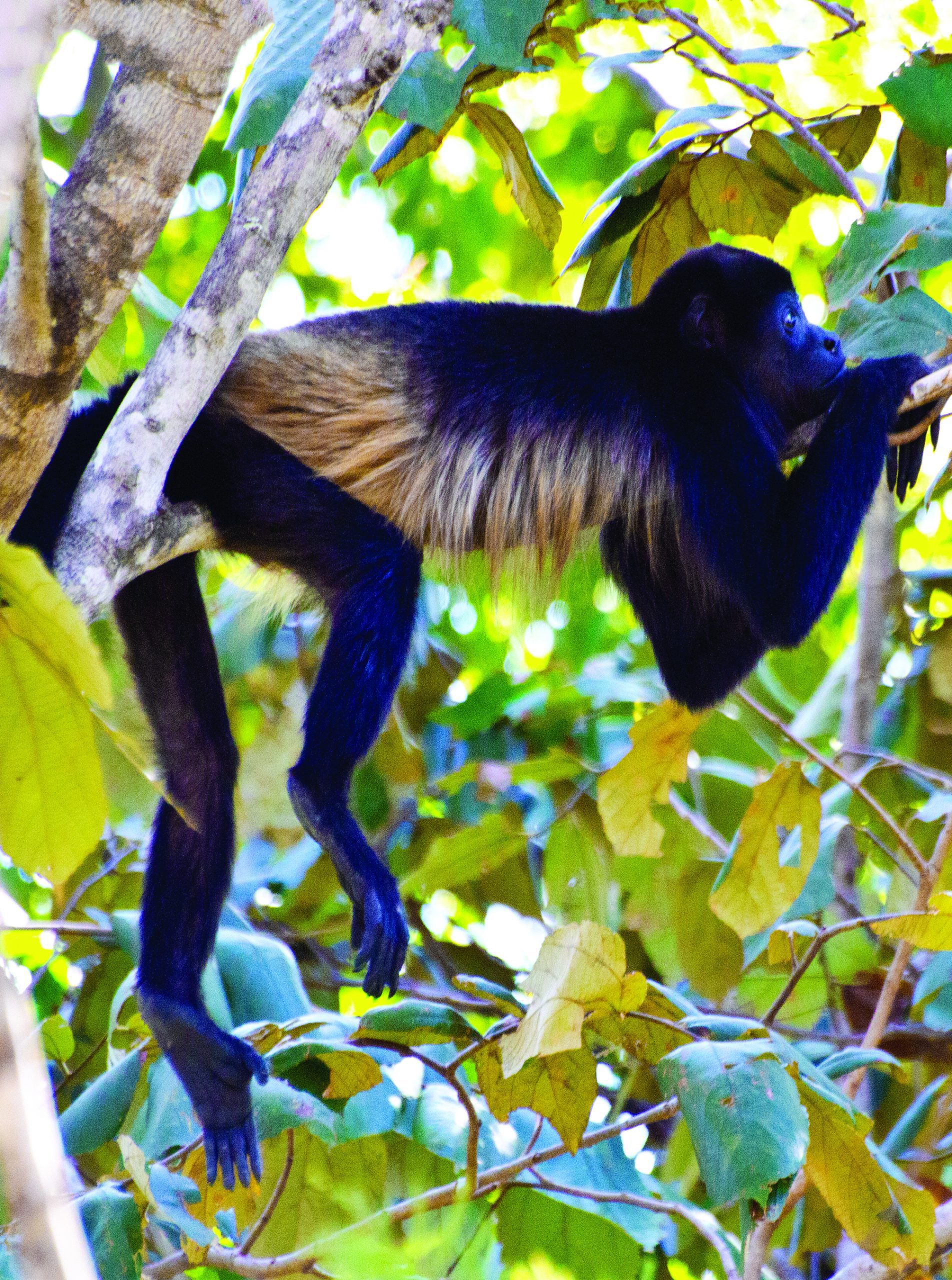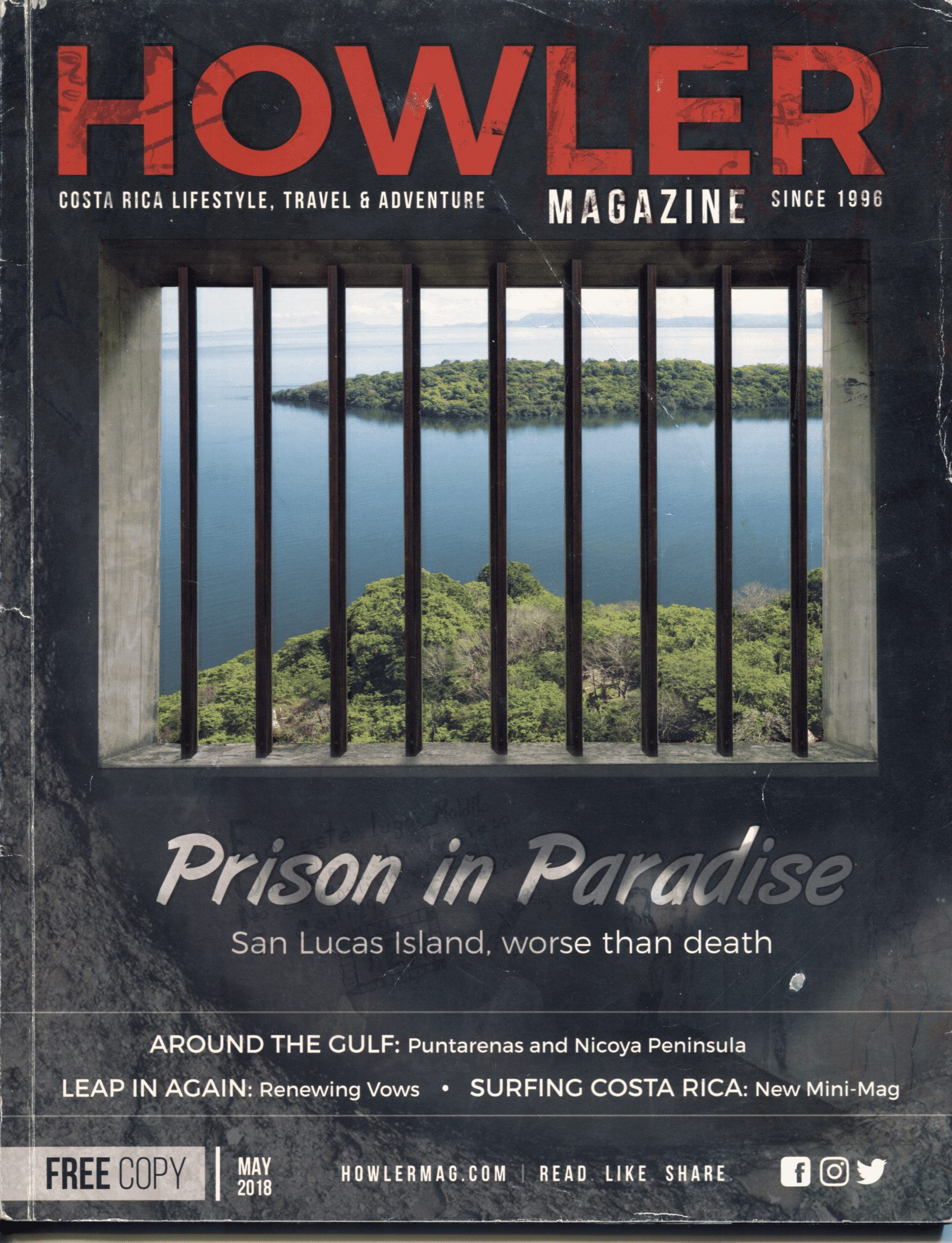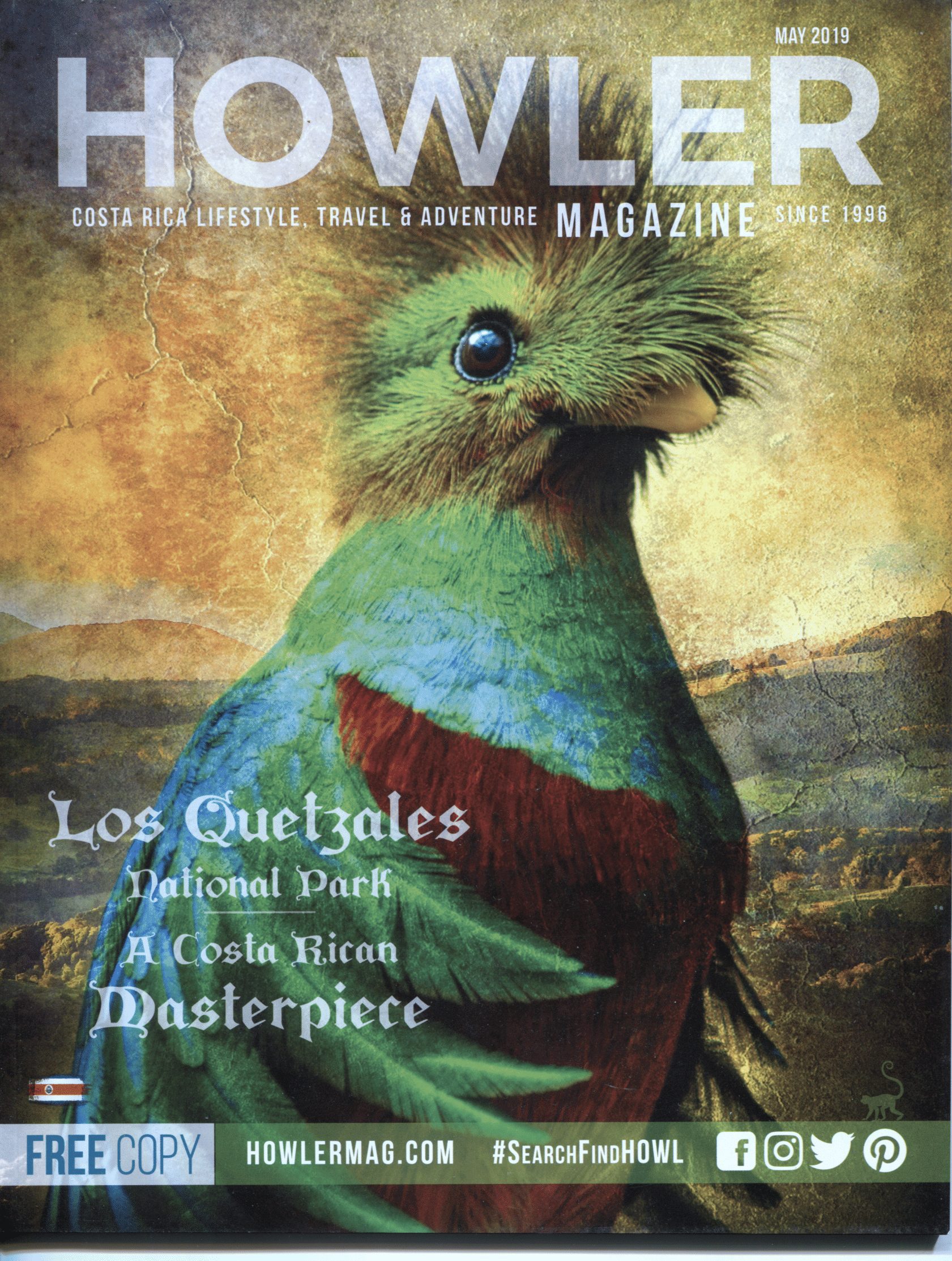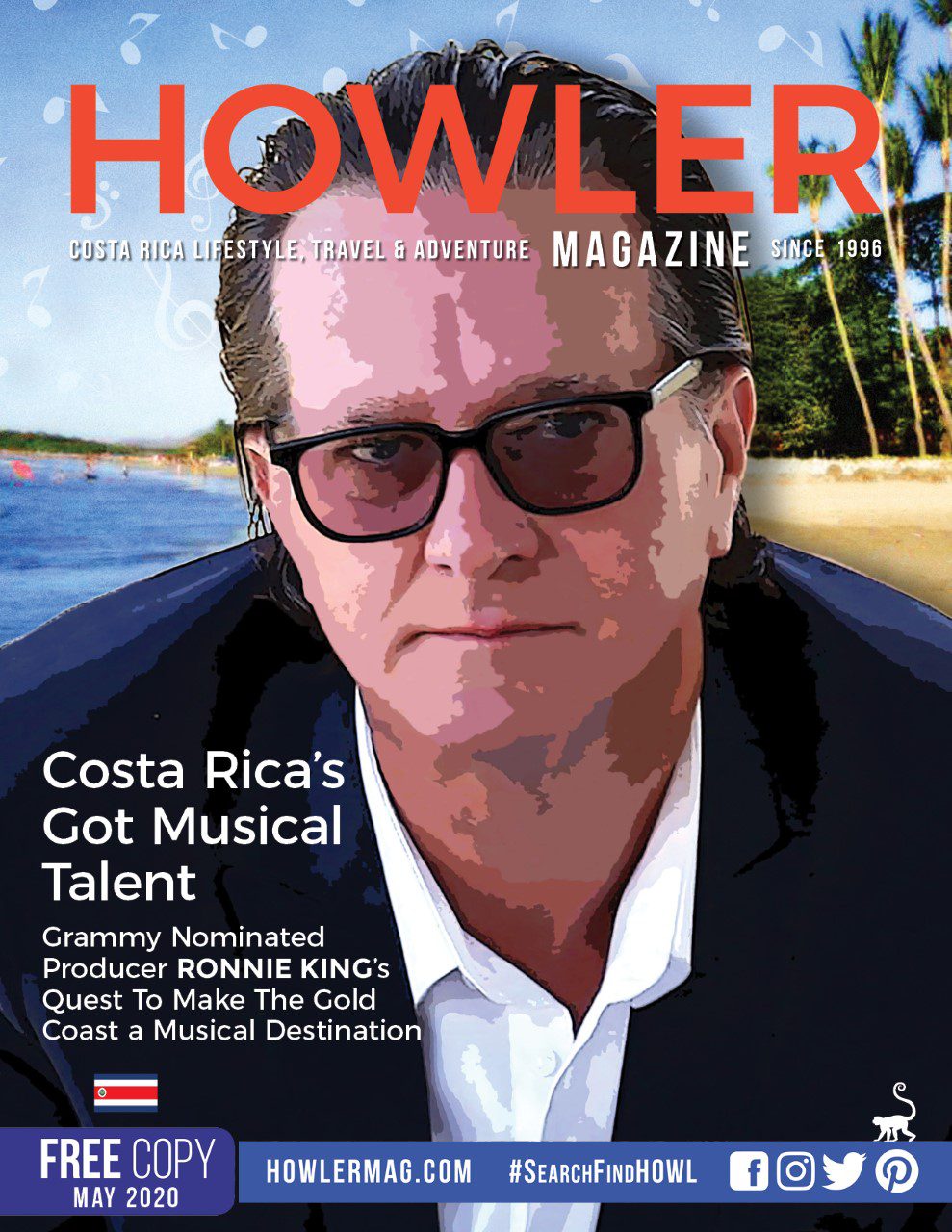
25 Years
Like the monkeys in nearby treetops overhead where their namesake magazine was born and grew up, Howler has a voice that’s impossible to ignore and has never seemed to generate much complaining. And the fact that it hasn’t gone away or faded after 25 years speaks volumes about its enduring success. As highlighted in this issue’s celebratory editorial, the reverberating impact is louder, deeper and wider than ever.
In the early years, just as the relatively unimposing stature of howler monkeys belies their astonishing vocal capacity, it might have been easy to underestimate the fledgling publication’s potential for speaking up, being heard and reaching out to ever-expanding circles of loyal readers and supporters. But it did not take long for this to happen as Howler had no difficulty fitting in, finding its groove and feeling right at home in Tamarindo. That’s where it all started in May 1996 as the brainchild of founding publisher David Mills. And as the adopted offspring of a spirited beach town that was basking in newfound popularity while rushing headlong into its own adolescent growth spurts, Howler had plenty to be exuberant about while growing up.
See for yourself what was going on in Howler’s midst over the past quarter-century, and in the wider world of Costa Rica and beyond. For this anniversary journey, we’ve selected all of the May issues and listed a few highlights below each cover image.
Keep in mind that other publications have come and gone during the same time period, while Howler has kept on getting bigger and better.
Hope you enjoy our blast from the past!
See page 18 in full screen!
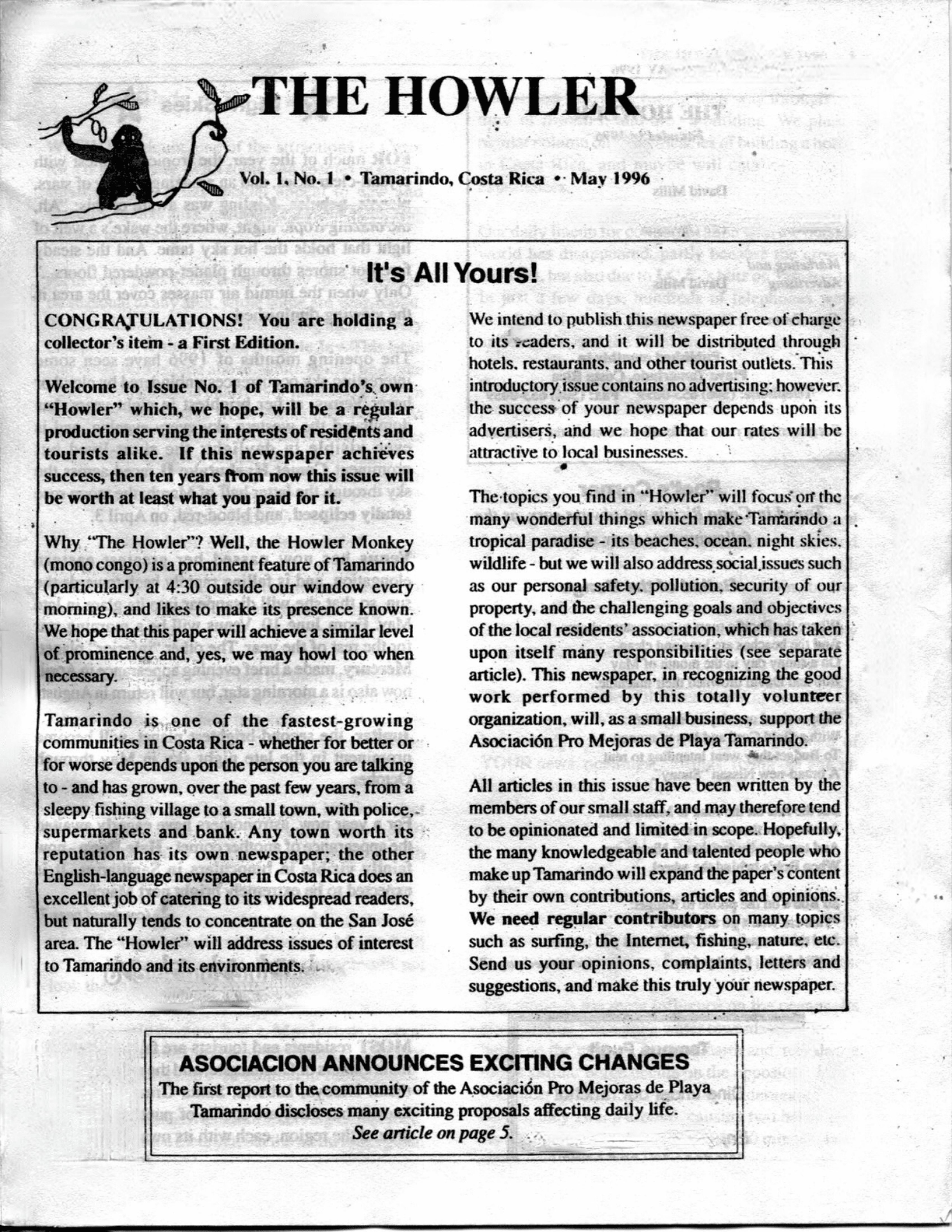
1996:
ICE installs hundreds of new phone lines in Tamarindo, eliminating daily lineups for limited public phone access.
Asociación Pro Mejoras de Playa Tamarindo inaugural town meeting agenda items: Loose horses; maximum 9 bus tickets daily to San José not enough; proposed sewage treatment plant — Hotel Diria, future project for town; Villareal – Tamarindo road to start June 1 — ₡50 million to pave, may include cobblestones, speedbumps, sidewalks.
Tamarindo Macintosh user group created.
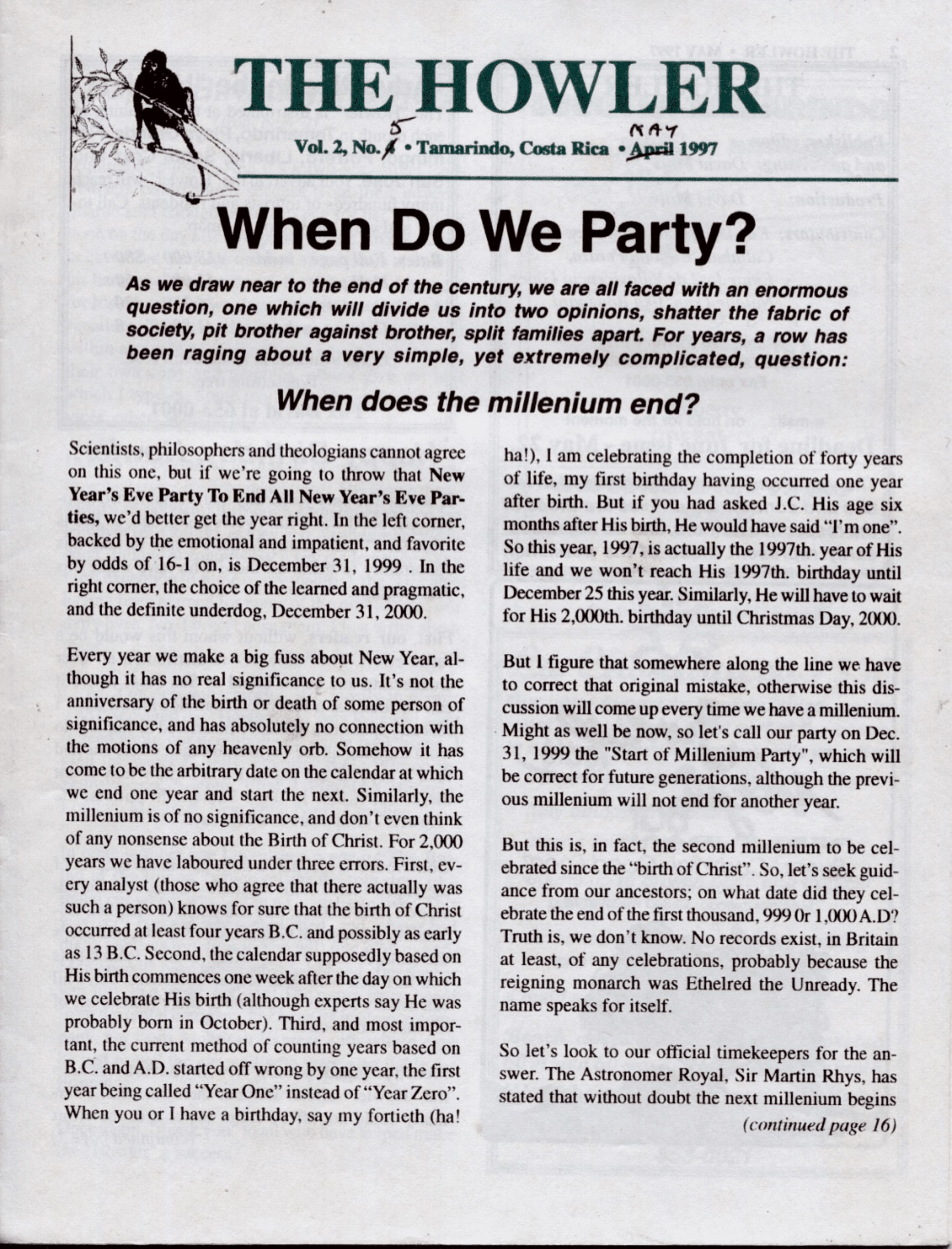
1997:
Both public telephones in Tamarindo converted for prepaid card use only (₡200 or ₡400), not calling cards or coins.
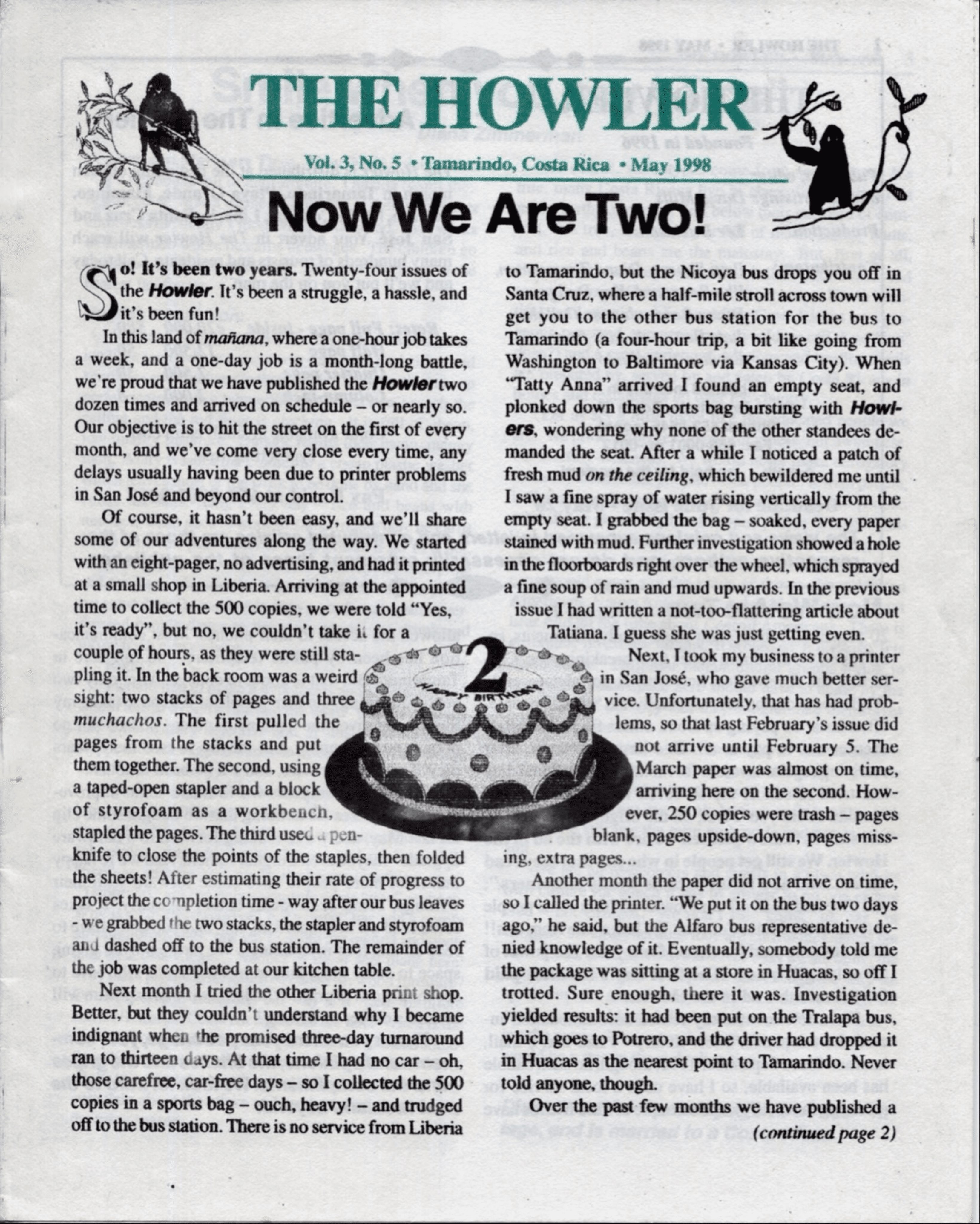
1998:
For sale: Wooded lots between Villareal and Hernandez, with electricity and guaranteed water — from $8,000.

1999:
Howler’s 3rd anniversary: from 8-pager with no ads to current 28 pages with second color and ads, serving much of Guanacaste from Liberia to beaches.
For sale: Golf and country club condos — $5,650 – $13,900. 16-ft. Hobie Cat with trailer — $1,500. Blue plate specials at Las Brisas — ₡1,000. 1996 Hyundai Mighty 2.5 ton turbo diesel truck — $15,575.
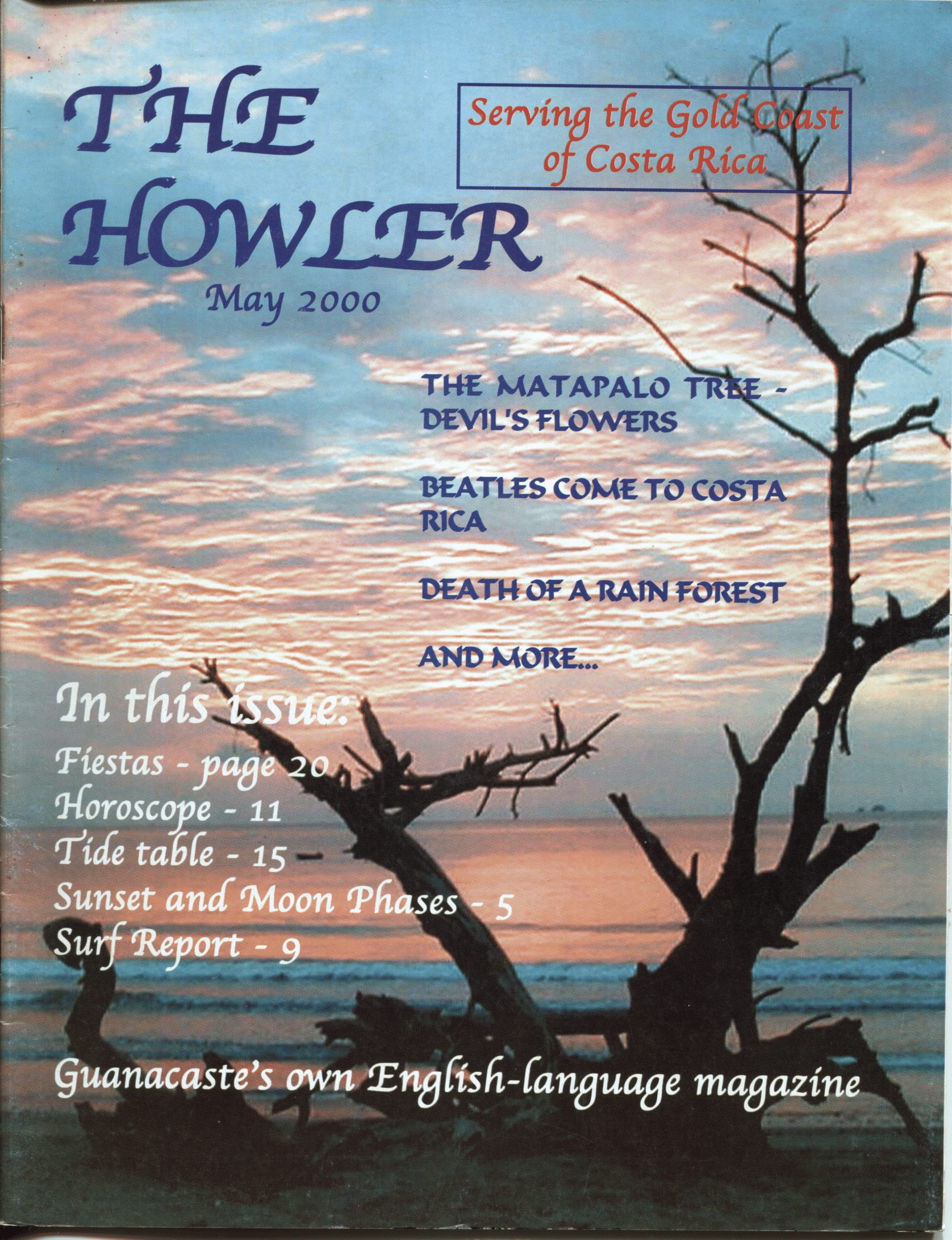
2000:
Country Day School opens in Playa Flamingo
Playa Grande news: Healthy return of turtle population for nesting season, record number of tours at Las Baulas Marine National Park; Pura Vida Supermarket opens.
Appeal to form lifeguard association, noting 12 people were recently rescued from Tamarindo rip currents within14-day span.

2001:
Howler’s 5th anniversary: 36 pages, full-color covers and some color inside, expanded content variety.
Mobile library buses pilot project to bring national and international literature to rural areas of Costa Rica where books are not available.
Oneida Children’s Park to be dedicated in memory of baby who died in recent accident and was honored at well-attended sunset memorial ceremony.
Efforts to set up a Tamarindo surf federation to sponsor local kids for international competitions.
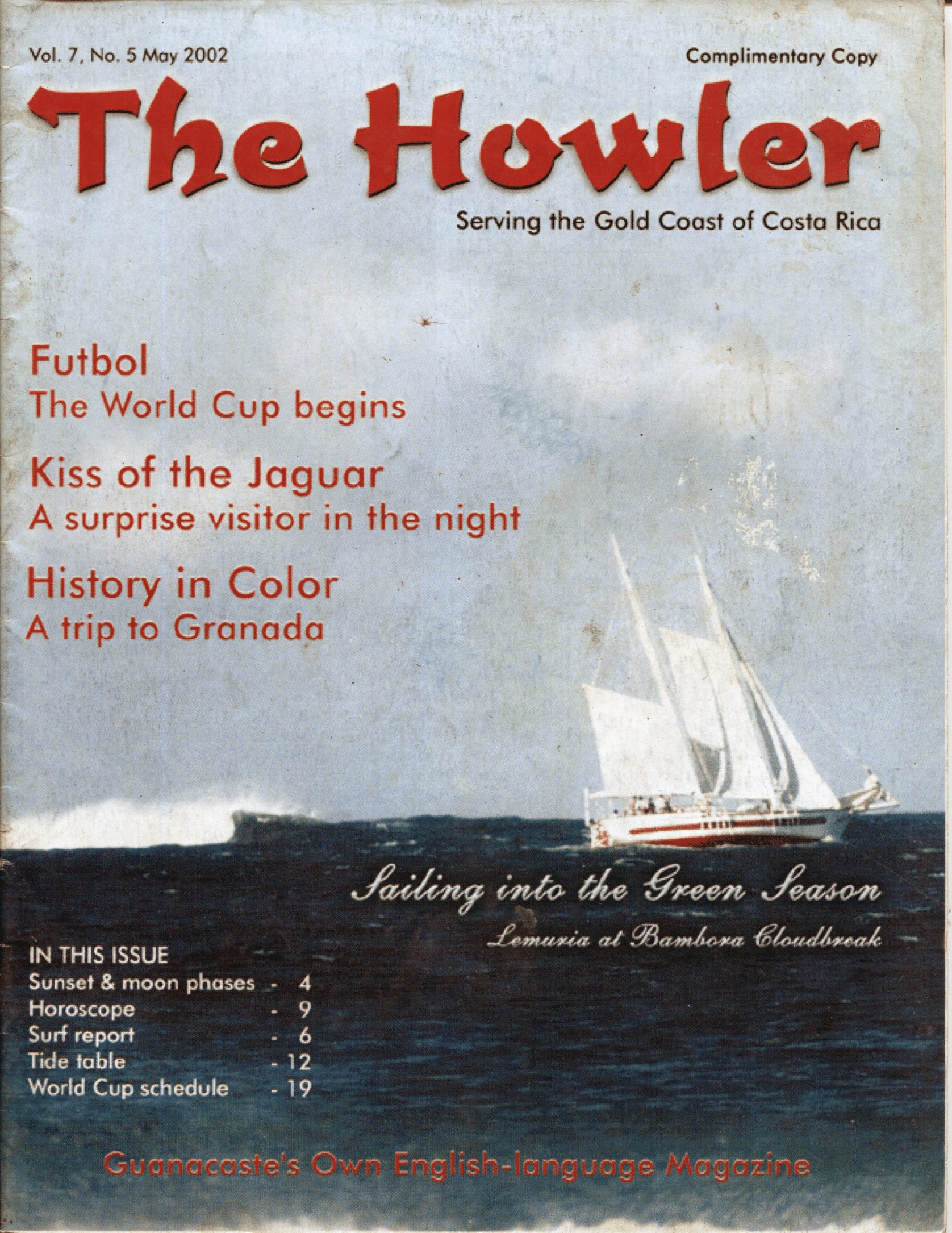
2002:
Road to Tamarindo surfaced … almost. Built up and finished with thin tar coat in time for Semana Santa, but now awaiting asphalt and already potholed.
For sale: Motorcycle — $2,150; motorcycle helmets — $15; scooters — $850.
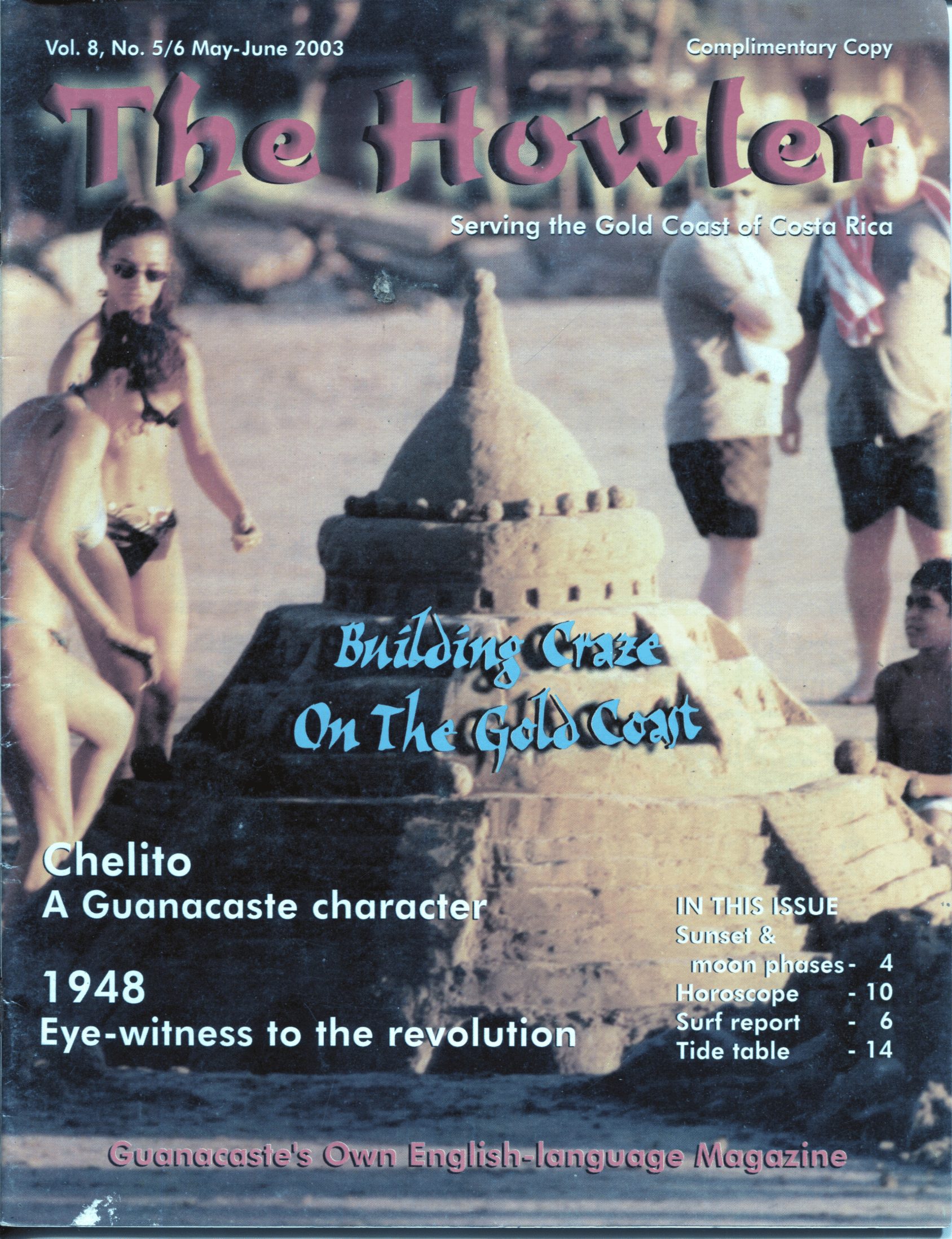
2003:
Thanks to Witch’s Rock Surf Camp for providing two lifeguards daily, noting they rescue on average one swimmer per day.
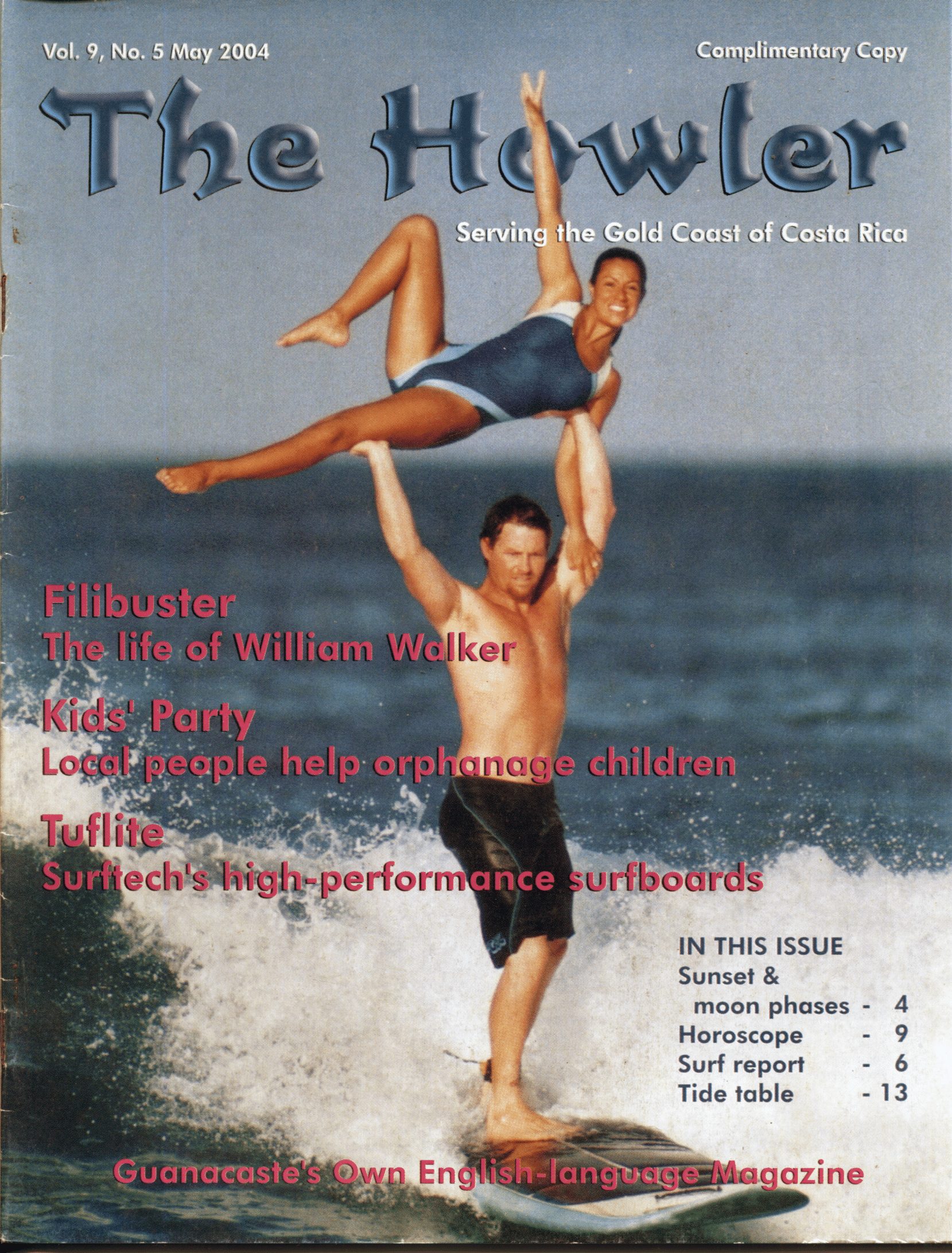
2004:
5 new fire hydrants installed around Tamarindo.
Costa Rica Women’s Soccer Team in Canada competing in FIFA under-19 women’s world championship.
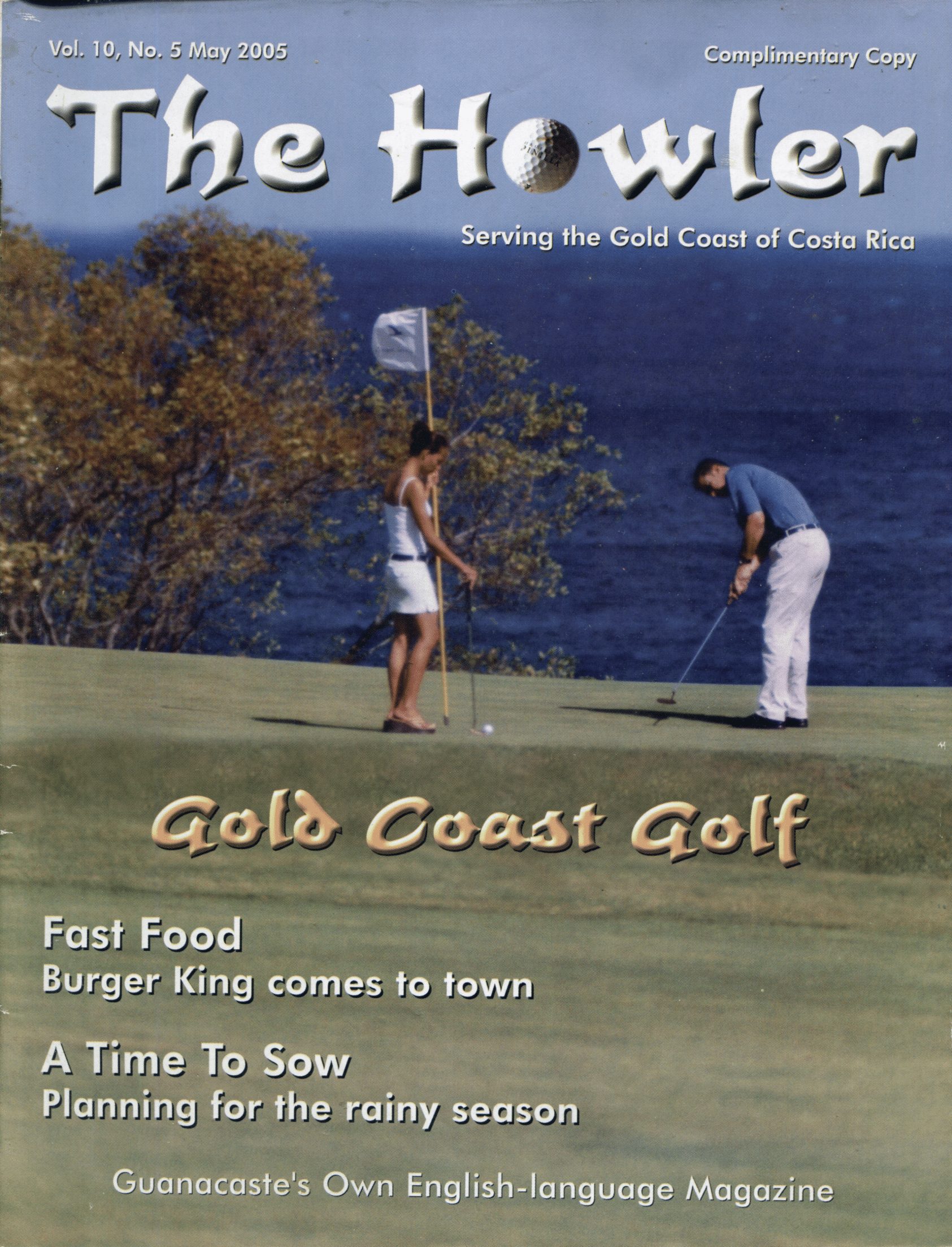
2005:
Telemax CR ad for international calls — 7 cents / minute.
“Protesters” against Burger King’s presence in Tamarindo reflect wider debate about the impact of Guanacaste economic growth. Businesses want to increase tourism, while detractors bemoan overdevelopment and trashing of dream lifestyle.
Banco San José (BAC) comes to Tamarindo.
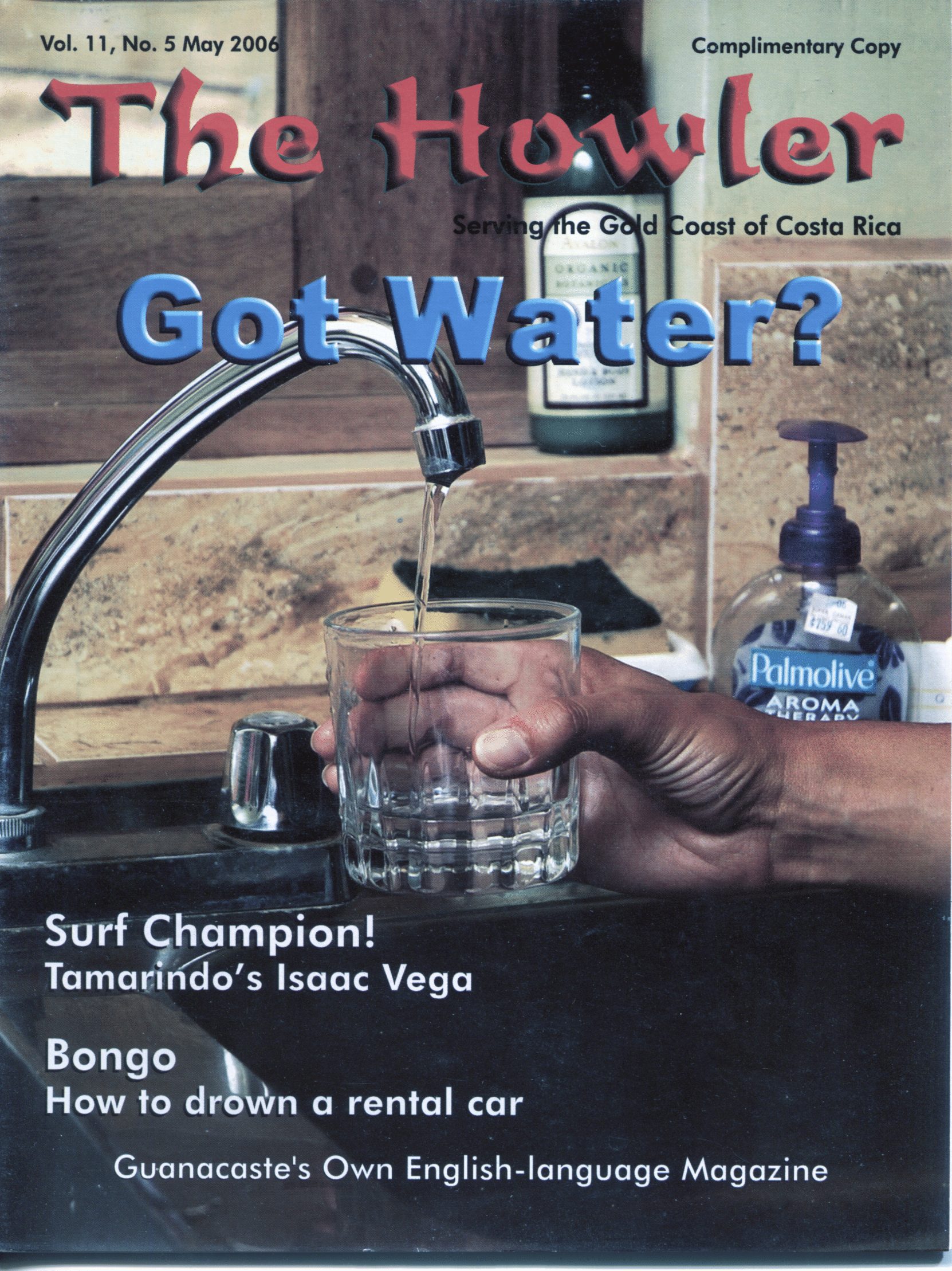
2006:
Howler’s 10th anniversary: 48 pages, full–color inside.
Bad roads: Villarreal – Huacas road took 6 weeks to patch, then 11-day holiday. Pending fixes — Huacas – Flamingo, Huacas – Matapalo, dirt main road to Belen.
Local prices creep: Beer before — $1 at bars; beer now — $2 at most bars, ₡1,250 at high-class hotels, ₡1,500 at Diria (Off-truck price just ₡300). Average dinner for 2 + wine — $60. Veggie truck price — ₡5,000 for bag of grapes, 2 mangos, 2 peppers. Medicine in Liberia — ₡1,200; same medicine in Huacas —₡2,010.
Goodbye from well-wishers to Perla, founder of namesake eatery Perla’s, which closed in April.
Rapid development of Gold Coast putting huge strain on water resources.
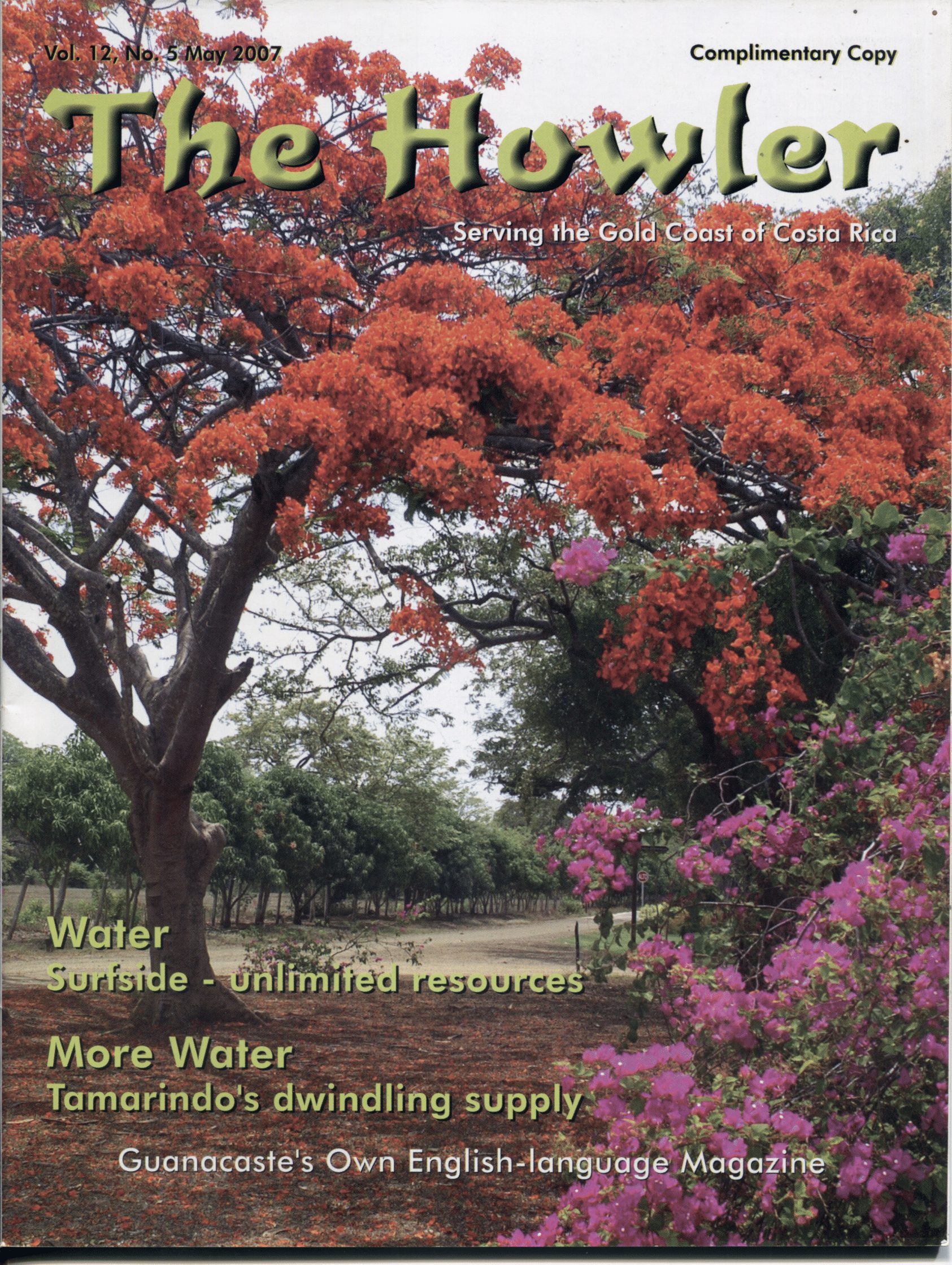
2007:
Second below-average high season worsened by early Easter and early rains. Businesses feeling the pinch and some for sale.
National “Save Tamarindo” commission created to work with new Asociación Pro Mejoras de Playa Tamarindo board.
NBC Today show features the Great Turtle Race —11 leatherbacks, tagged with transmitters, racing from Playa Grande to Galapagos Islands, sponsored by turtle conservation supporters
Work underway at Villarreal end of “back” road into Tamarindo, long awaited as an alternative route in and out of town.
Editor decries anonymous hostile anti-gringo messages by citing examples of extranero projects benefiting local population.
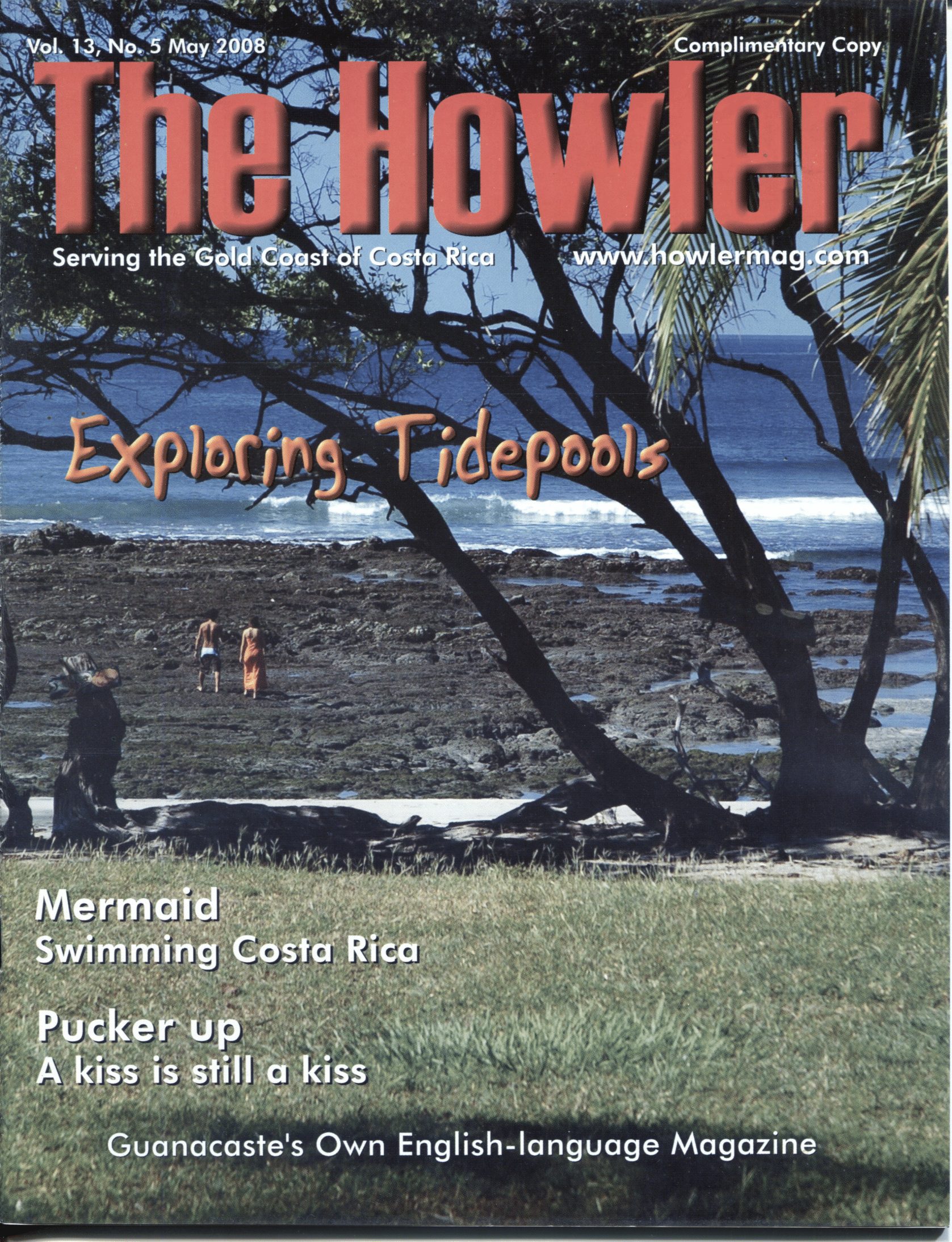
2008:
Farmacia el Cruce, marking 5 years as first drugstore in the area, at Huacas, opening Tamarindo branch.
Successful Tamarindo recycling drive inspires hope of running monthly collection program.
La Paz Community School recognized as accredited CR private school.
Rio Nandamojo floodplain restoration project reflects expansion of Blue Flag Ecology program to include watersheds.

2009:
Tamarindo’s grim realities in wake of global economic collapse: tourism down, stores closing, long-term residents moving, empty shells of abandoned projects, and looming pre-boom “pioneer” atmosphere.
New road built between Veintesiete de Abril and Paraiso.
Hidden Garden Art Gallery opens near Liberia.
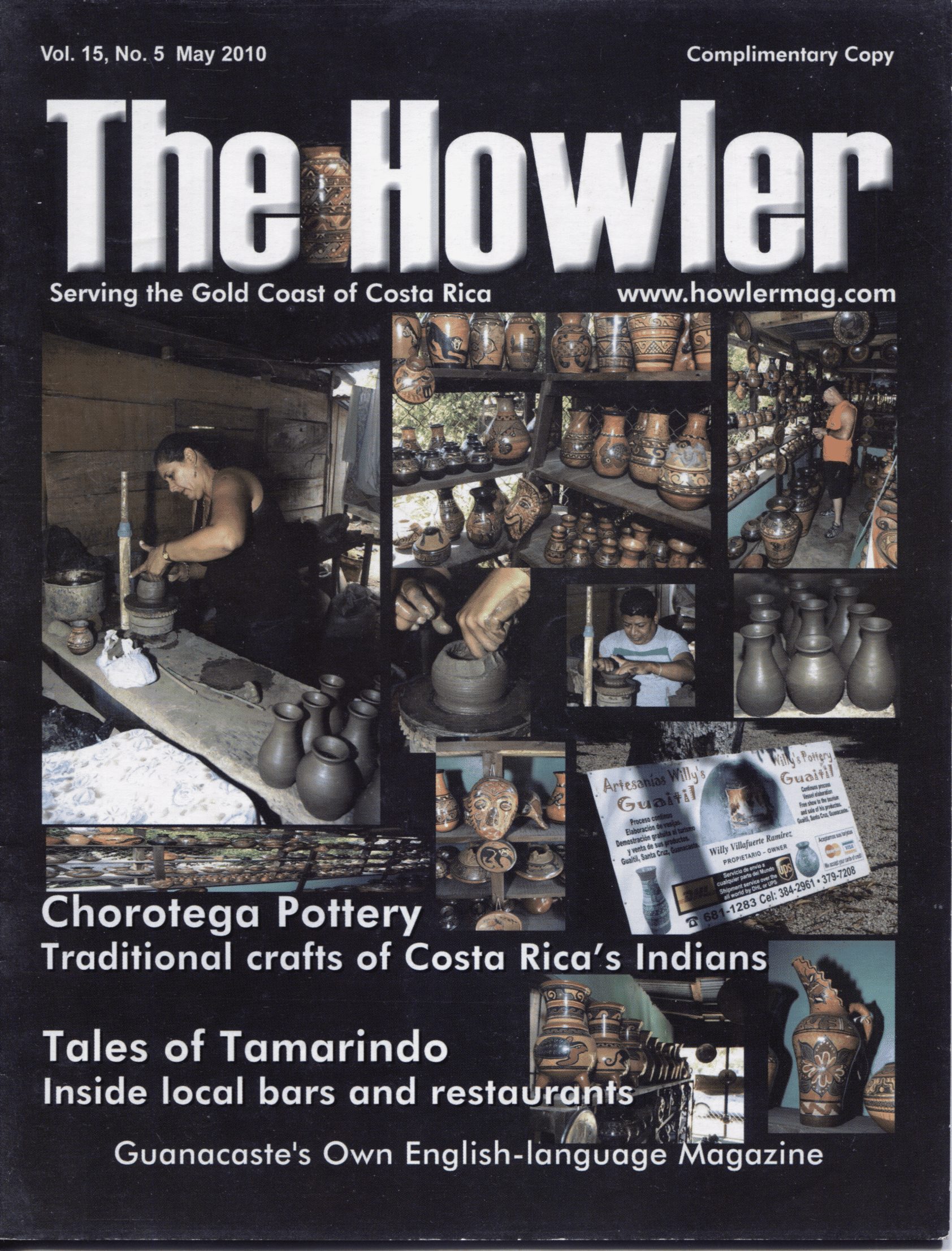
2010:
Pacific Plaza Health and Living project near Liberia in phases: CIMA hospital and medical office building, then continuous care residential community.
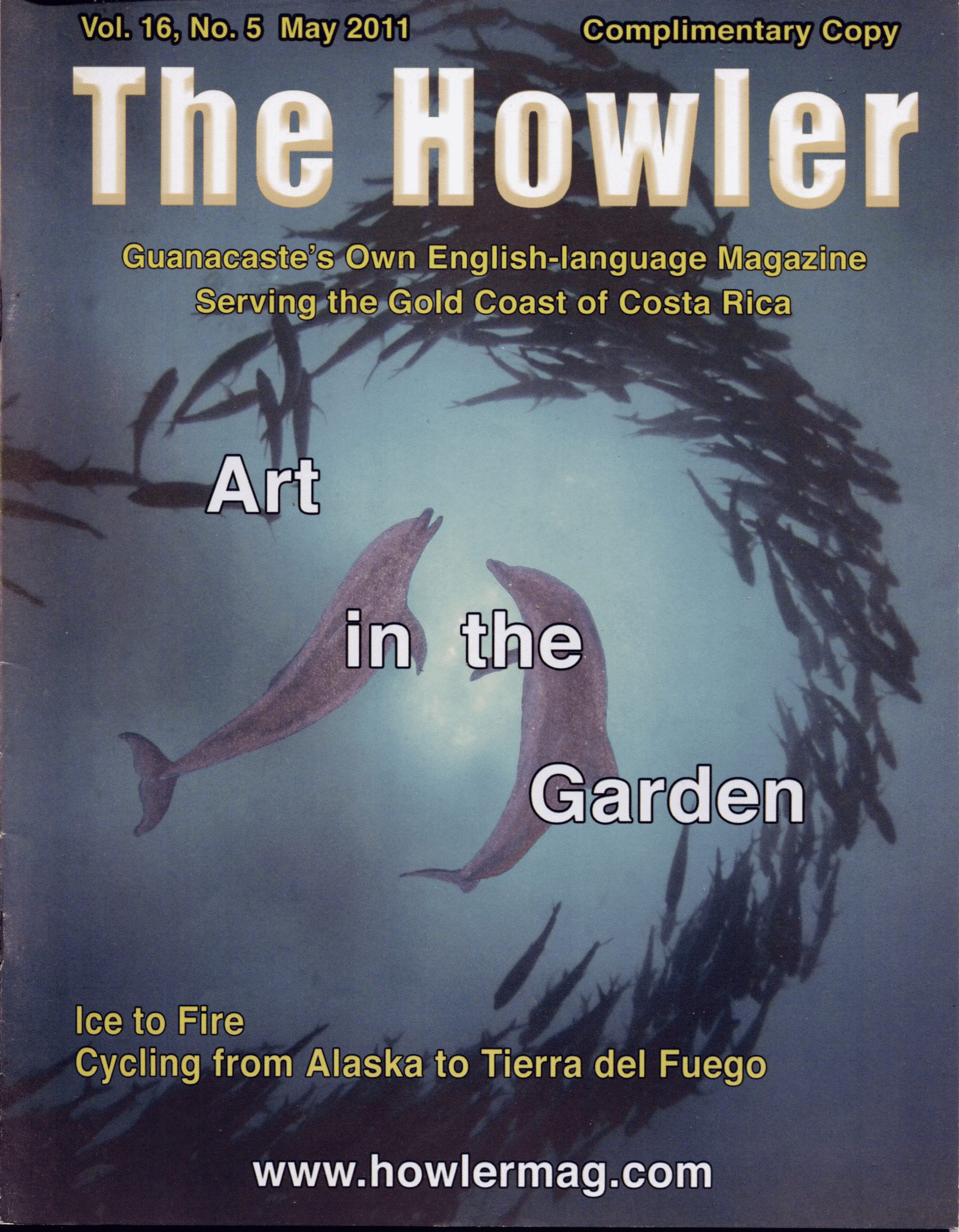
2011:
Best high season in years longer than usual due to late Easter: busy tour companies and surf schools, full hotels and restaurant line-ups.

2012:
National ban on smoking in public places effective April 10.
Santa Cruz municipality opens office in Tamarindo.
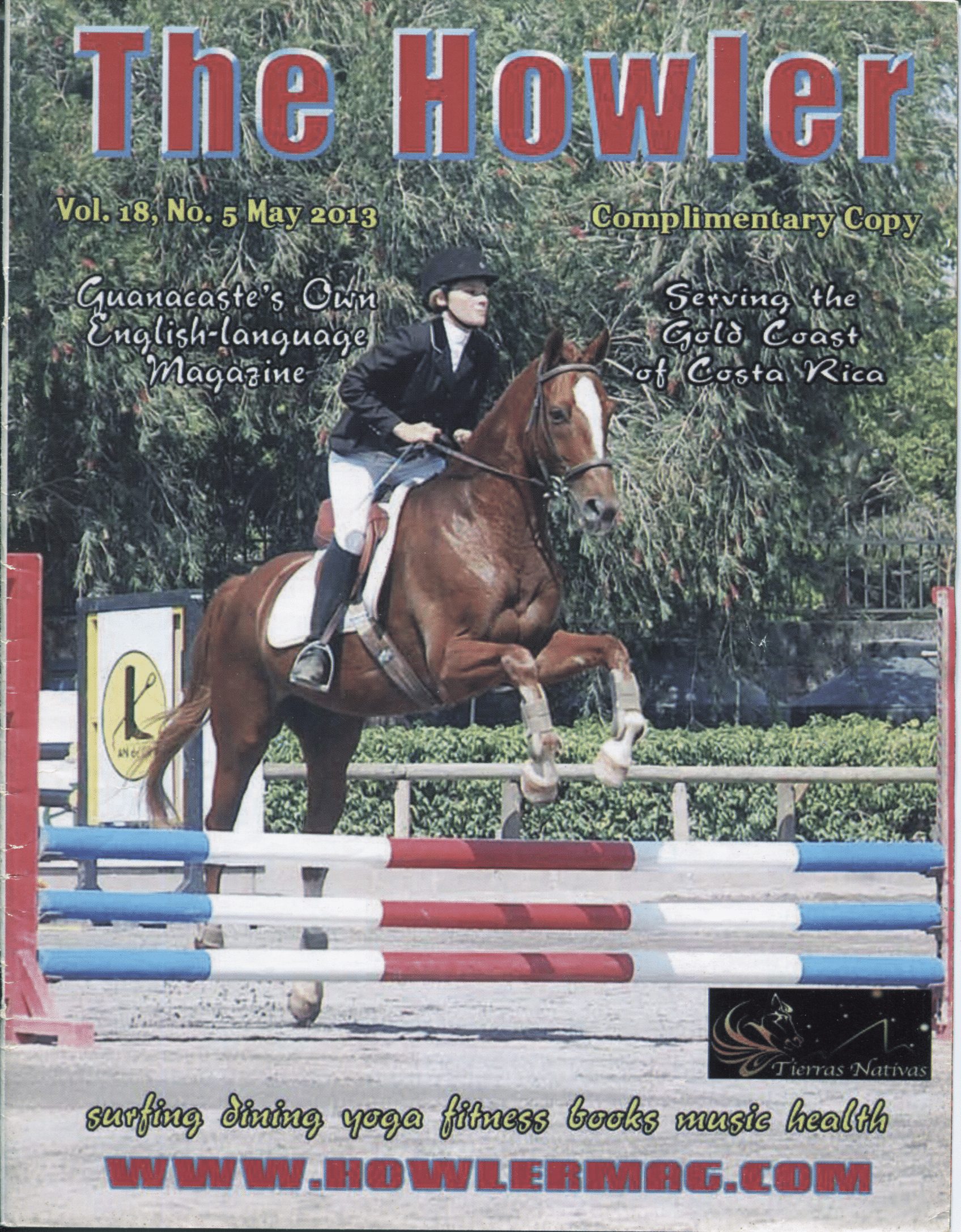
2013:
Last-minute reversal of government decision to lift holiday ban on serving alcohol puts damper on Tamarindo’s Semana Santa festivities.
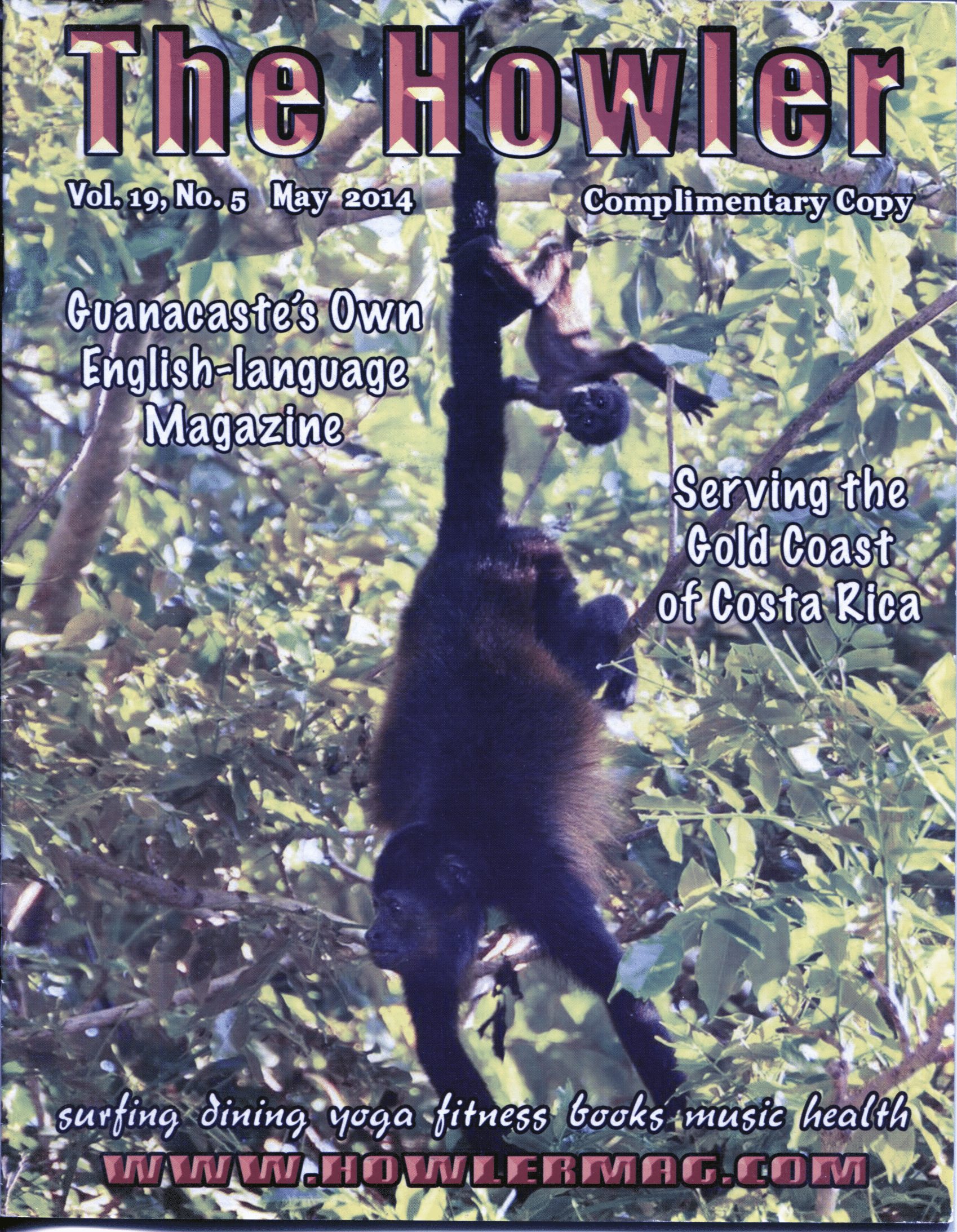
2014:
Coopeguanacaste must now join all other provincial electric utilities in providing grid connection rights and net metering privileges to customers producing their own solar energy
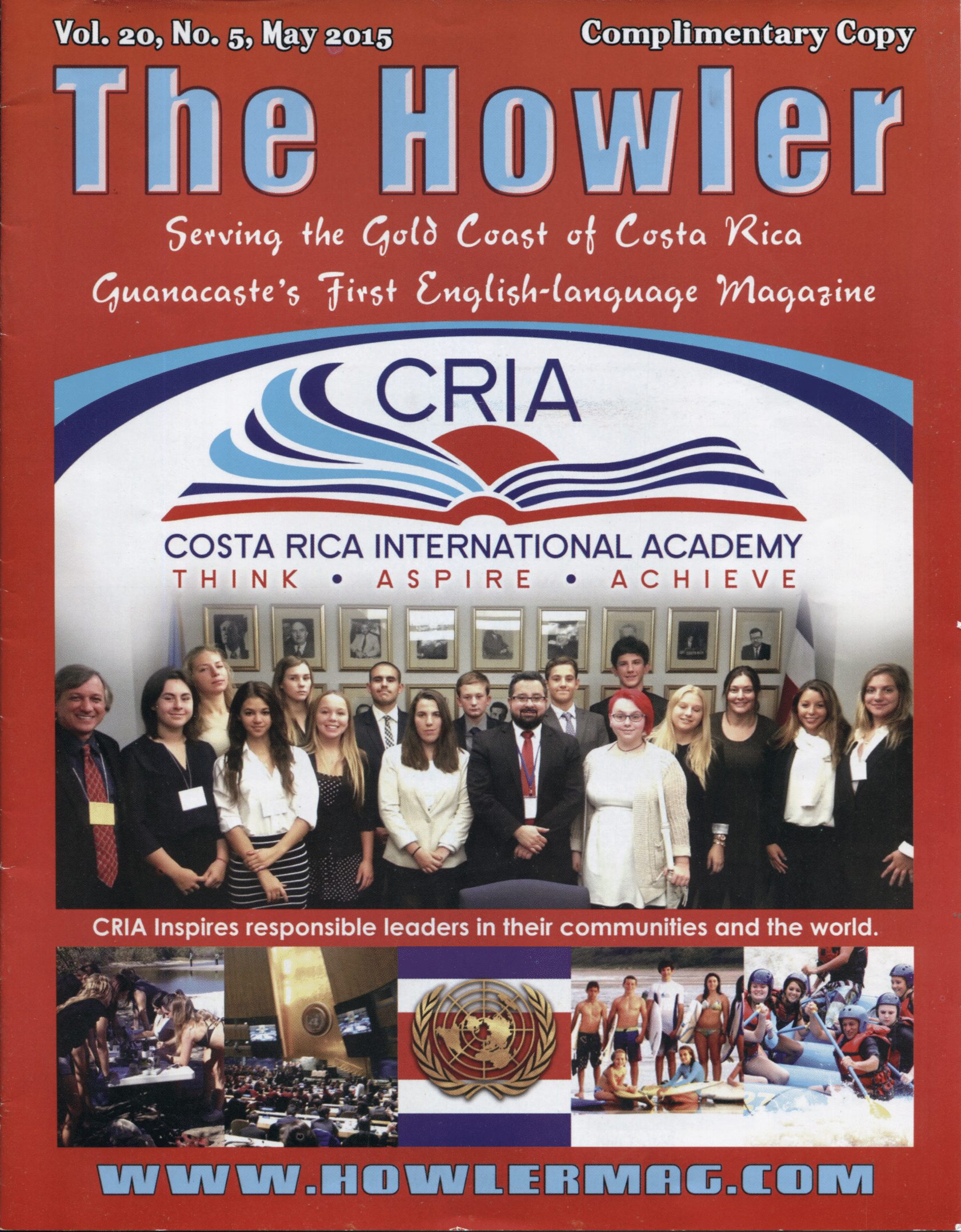
2015:
CRIA marks 15 years in Guanacaste inspiring young leaders of tomorrow with college prep programs.
ADI Tamarindo updates: Ministry of Security meeting about urgent local needs from municipality, including police, dedicated garbage truck; muralist to decorate Oneida Children’s Park; lifeguard tower at Witch’s Rock.
Green Costa Rica: 75 days into 2015, CR had produced enough electricity from renewable sources to eliminate any fossil fuel reliance for the year. Government announces $858 million geothermal project in Rincón de la Vieja. All 8 coffee-producing regions deemed origin denominations, with sustainable production processes.
2016:
CLICK ON MAG COVER FOR THE DIGITAL MAGAZINE.
Howler’s 20th anniversary: Founding publisher David Mills retires and is succeeded by John Quam as owner and publisher/editor-in-chief. In the August issue, the first produced under new management after a few months’ break, John conveys excitement about Howler’s future while reaffirming the publication’s commitment to the community it serves and belongs to.
2017:
CLICK ON COVER TO SEE ENTIRE MAGAZINE
Howler now generally has page count from 80 to 96 pages each issue, organized into consistent sections: Travel & Adventure, Arts & Entertainment, Lifestyle, Community and Dining Guide.
Cover story profiles Costa Rican singing sensation Debi Nova.
Gold Coast education options are highlighted as part of vibrant community fabric.
Playas del Coco hosts Gatorade Ironman 70.3 Costa Rica, presented by Kolbi.
2018:
CLICK ON COVER FOR FULL MAGAZINE.
Cover story delves deep into San Lucas Island’s dark past as prison in paradise.
Howler introduces Surfing CR mini-magazine within main magazine.
Presidential election of Carlos Alvarado makes world news for unusual reason of being first such vote on Easter Sunday.
2019:
CLICK ON COVER…
Some Howler sections have gradually been adapted as “mini-mags” by rotation. Also introduced “flip mag” format so different sections open each time from the reverse back cover.
Cover story showcases Los Quetzales National Park, adding to expanding Howler collection of featured national park articles. Neighboring Providencia and San Geraldo de Dota region featured in complementary article.

